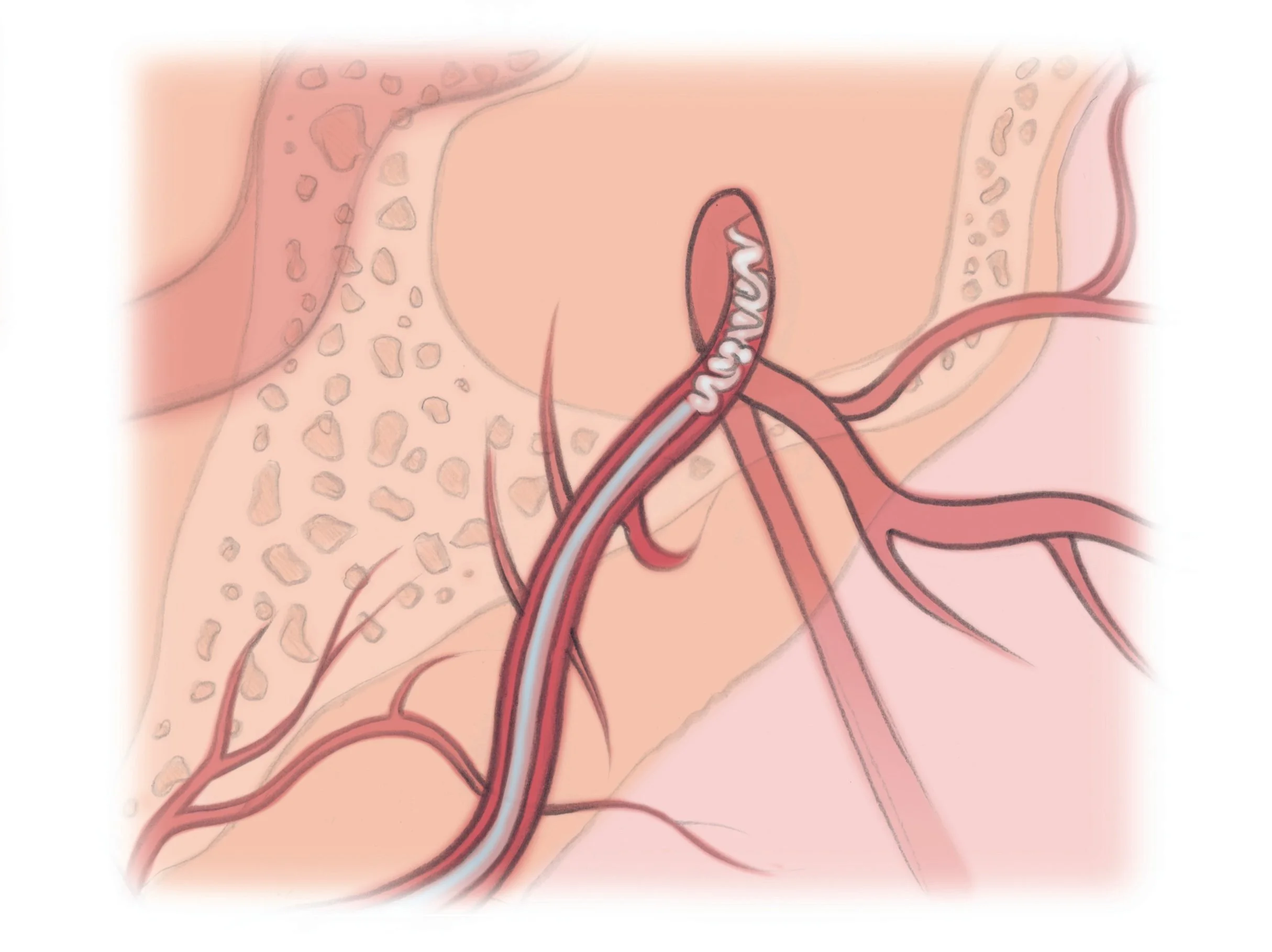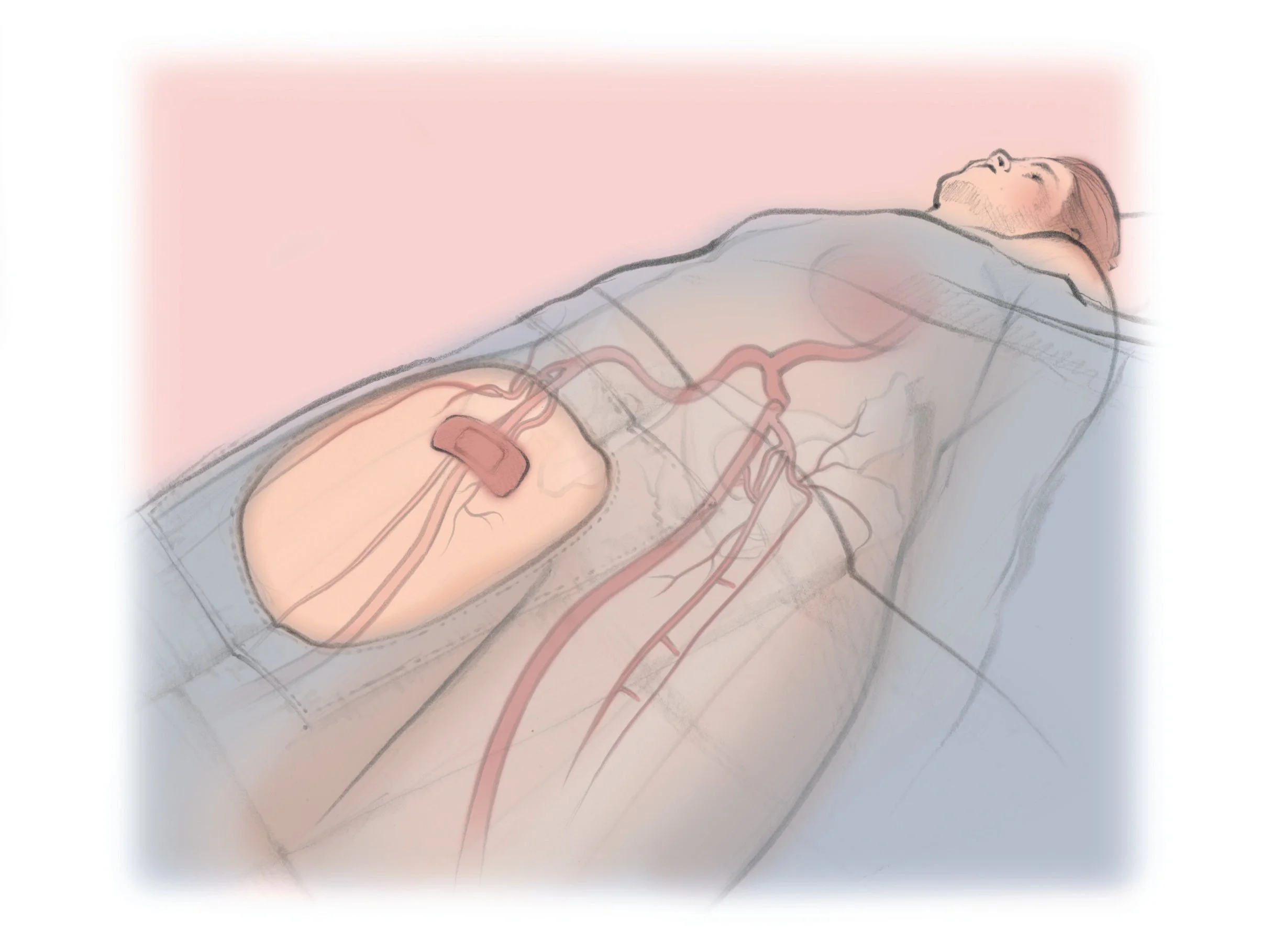What is Severe Nosebleed and Embolization?
Nosebleeds are common and have many different causes. Most nosebleeds stop on their own or with pressure. However, some are severe and require treatment to make them stop. These can even be life-threatening.
Embolization is a minimally invasive way to stop a severe nosebleed. The bleeding vessel is blocked with special material to stop the bleeding.
How is Embolization for Severe Nosebleed done?
You will be given medication to help you relax. The skin of your wrist or the top of your thigh will be cleaned and numbed. The clinician will thread a thin tube through a pinhole in the skin into the blood vessel and will use x-rays and dyes to guide it to the bleeding vessel in the nose. The clinician will block the bleeding vessel by injecting special material through the tube. They will remove the tube and place a dressing over the pinhole where the tube entered your skin.
Embolization for Severe Nosebleed
1. After numbing the skin, the clinician threads a small tube into a blood vessel at the top of the thigh (shown) or wrist.
2. Using x-rays and dye, the clinician guides the tube to the bleeding blood vessel and injects special material to stop the bleeding.
3. After, the clinician removes the tube and places a bandage over the pinhole in the skin.
What are the risks?
Embolization for severe nosebleeds is generally a safe procedure when done by a specialist.
1 in 5 people experience
temporary headache
pain or tiredness with chewing
facial pain, numbness or swelling
1 in 50 people experience
stroke
blindness
more permanent facial scarring or paralysis
What are the alternatives?
Your treatment options depend on your preference, overall health and unique conditions.
Alternative 1 Packing the nose with dressings coated in medicine to stop the bleeding. Sometimes small balloons are used to apply pressure from the inside. This option is usually tried first.
Alternative 2 Ablation/Cauterization to treat bleeding vessels with medicines, heat, or cold when those vessels can be reached from the nose.
Alternative 3 Surgery to tie off the bleeding vessel. The outcomes can be similar to embolization. The risk of major complications can be lower than embolization. Discuss your options with your clinician.




